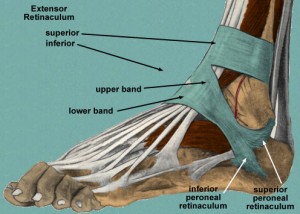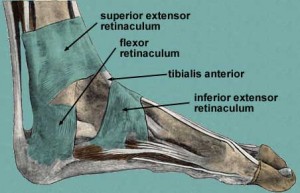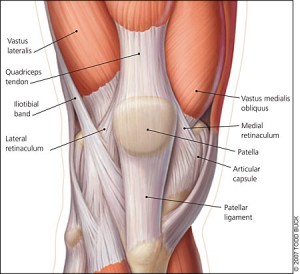The retinaculum, part of the fascial system, is a strong connective tissue found only in certain parts of the body.
The retinaculum exists to provide stability and protection for tendons and nerves as they cross important joints.
Fascia is a protective webbing that wraps the entire body.
It works in different ways, connecting some things together, and allowing others to glide around each other. Fascia is not dissimilar to tendons and ligaments in their physical makeup but they all have different roles to play.
The retinacula, found in the hand, foot, and knee, are covering muscle tendons and nerves as they cross vulnerable joints.
There are two important tunnels that tendons and nerves pass through in the wrist and ankle.
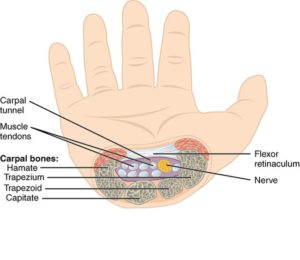
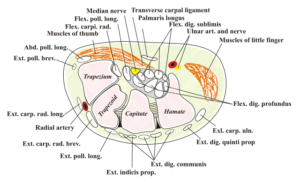
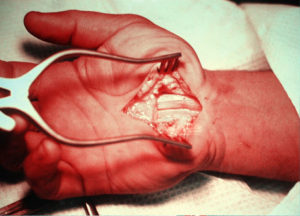
The carpal tunnel of the wrist, which most people have heard of, allows for the flow of the median nerve that innervates the hand. The less-mentioned tarsal tunnel plays a similar role in housing the tibial nerve (an extension of the sciatic nerve) as it passes from the leg to the foot.
There are a number of tendons that move through these tunnels as well and the flexor retinacula of the wrist and ankle are essentially strapping these nerves and tendons into place.
The extensor retinacula of the wrist and ankle play a similar role but don’t have nerves passing underneath them.
The retinacula of the knee are way more complex because of the structure of the knee itself.
There are two retinacula of the knee, the medial and lateral and they sort of act ligamentously to balance and stabilize the kneecap, ideally sustaining an equal pull to the inside and outside. They relate as well to the IT band and patella ligament and can all be seen to be of one piece if you want to stretch things a little.
***



